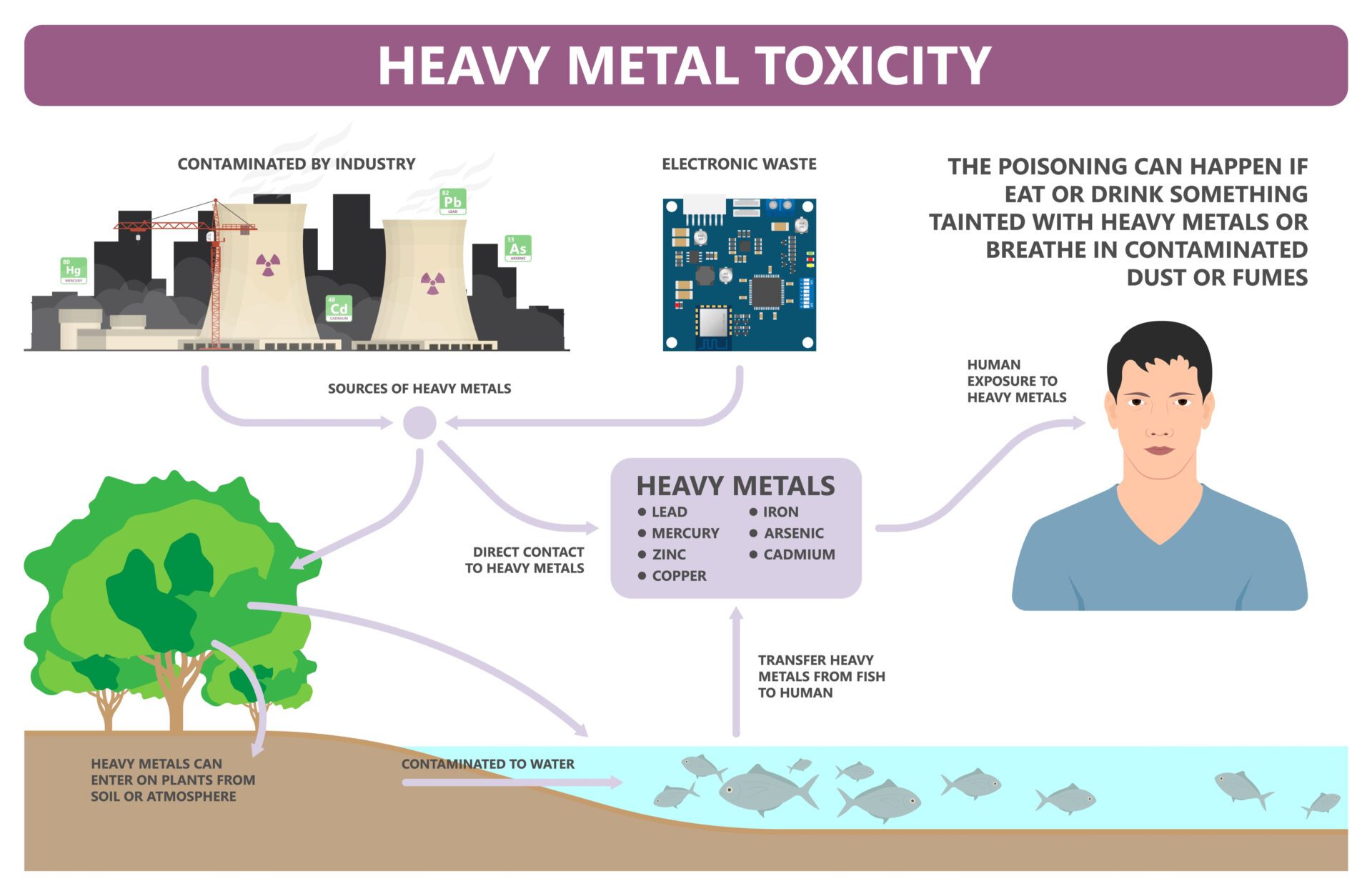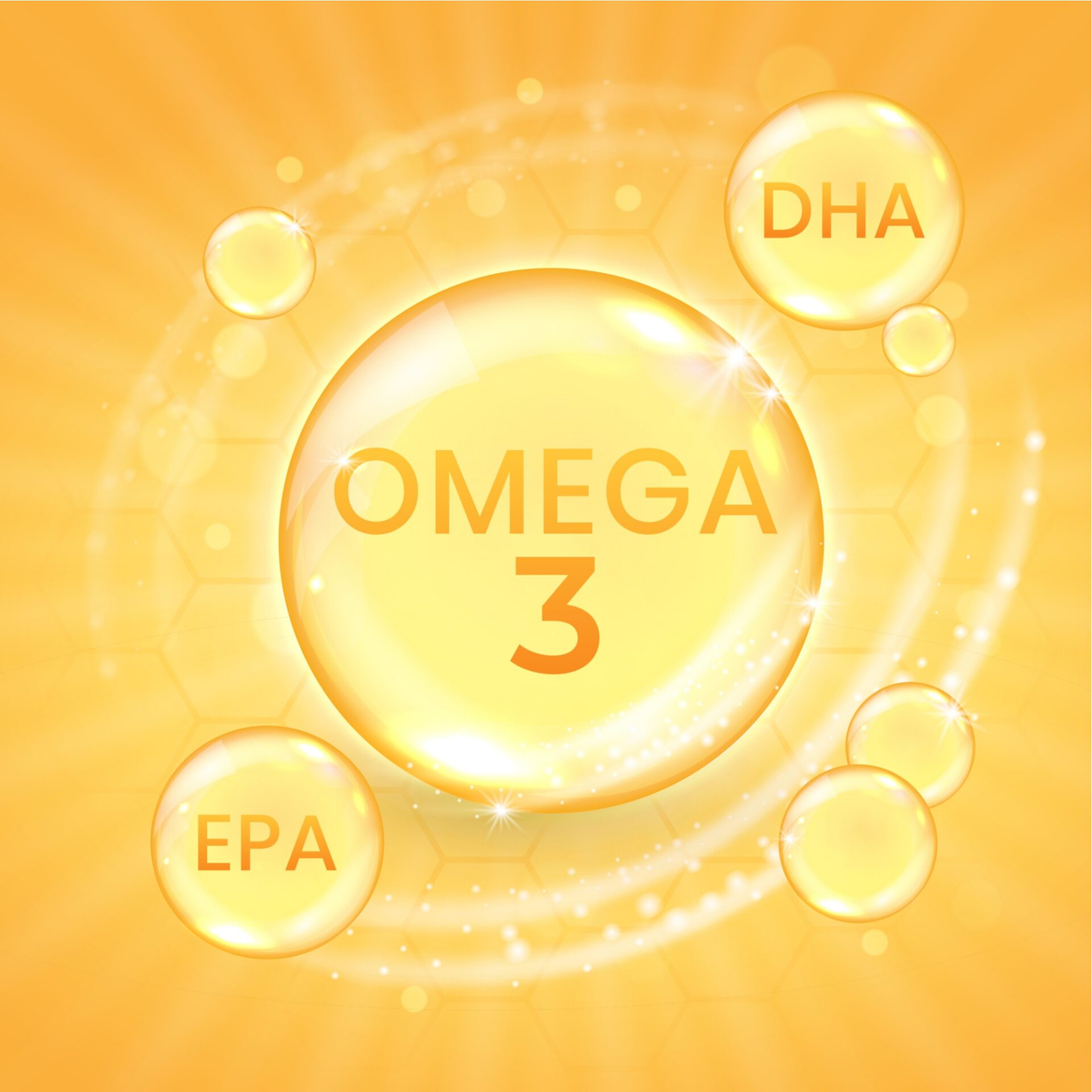Should You Be Concerned About Mercury in Fish?

Fish is fatty, keto-friendly, healthy, and delicious! Get your omega-3s and enjoy your favorite fish grilled, smoked, marinated, and any other way you like it. Fish is an excellent source of nutrients, healthy fats, and protein, but some fish can contain higher levels of mercury. Should you be concerned about mercury in fish? Which fish have the lowest mercury content?
What Is Mercury?
Heavy metals like mercury can be toxic. Mercury is naturally present in water, soil, and air, and it’s released in the environment in different ways, such as through natural events like eruptions and industrial processes like coal burning.
Mercury is categorized into three main types: elemental (metallic), organic, and inorganic. [red ID = 1]
You can be exposed to mercury in various ways, like inhaling mercury vapors during industrial and mining work.

The oceans are contaminated with mercury due to water pollution, and the fish absorb low concentrations of mercury. This is why consuming shellfish and fish can also expose you to mercury. Methylmercury is the organic form of mercury that can concentrate in the bodies of fish over time. Methylmercury is toxic and can cause serious health problems when it accumulates to certain quantities in the body.
Which Fish Have a High Mercury Content?
Longer and larger fish tend to have the highest mercury content, such as:
- Swordfish
- Shark
- Tuna
- King Mackerel
- Northern Pike
- Marlin

Many bigger fish can’t easily excrete mercury from their bodies. Bigger fish often eat lots of smaller fish containing small amounts of mercury, so the levels build up over time (bioaccumulation). [2] [3]
Seawater only contains small concentrations of methylmercury. Sea plants like algae actually absorb the mercury, and the cycle continues when fish eat the algae, absorbing and retaining the mercury. Predatory larger fish accumulate higher levels from consuming smaller fish over time. Larger fish can have mercury levels up to 10 times higher than the fish they’re eating (biomagnification). [4] [5] [6]
Mercury content of fish is measured in parts per million (ppm). For example, from highest to lowest, here are the mercury levels of some of the most popular fish: [7]
- Swordfish: 0.995 ppm
- Shark: 0.979 ppm
- King Mackerel: 0.730 ppm
- Bigeye Tuna: 0.689 ppm
- Canned Tuna: 0.128 ppm
- Cod: 0.111 ppm
- American Lobster: 0.107 ppm
- Herring: 0.084 ppm
- Trout: 0.071 ppm
- Crab: 0.065 ppm
- Haddock: 0.051 ppm
- Atlantic Mackerel: 0.050 ppm
- Pollock: 0.031 ppm
- Catfish: 0.025 ppm
- Squid: 0.023 ppm
- Salmon: 0.022 ppm
- Anchovies: 0.017 ppm
- Sardines: 0.013 ppm
- Oysters: 0.012 ppm
- Scallops: 0.003 ppm
- Shrimp: 0.001 ppm
SMASH
SMASH is an acronym that helps you remember the fish highest in nutrition and omega-3s and lowest in mercury. SMASH: Salmon, mackerel, anchovies, sardines, and herring (except for King mackerel).
Mercury levels in seafood depend on the level of environmental pollution and the species of fish or shellfish. One study examined fish from 291 different streams around the United States and revealed 27% of fish contained more mercury than the recommended limit. [8]

Another study examined fish on the New Jersey Shore and revealed one-third had mercury levels above 0.5 parts per million (ppm). Frequently consuming fish with mercury levels higher than 0.5 ppm is believed to cause health problems. [9]
What are the Negative Health Effects of Mercury?
Mercury in fish affects people in various ways. Even small amounts of exposure to mercury can cause serious health problems in humans and animals. There are different types of mercury and different ways you can be exposed to it in your environment.
Eating shellfish and fish is a source of mercury exposure, but this doesn’t mean that you should completely avoid fish altogether. Fish is an excellent source of nutrients. [10] [11] [12]
In the United States, government agencies suggest keeping blood mercury levels below 5.0 mcg per liter. [13]
One U.S. study of 89 people showed mercury levels ranged from 2.0-89.5 mcg per liter on average. 89% had levels above the maximum limit. The study reported higher fish intake was associated with higher mercury levels. [14]
Many studies show that people frequently consuming larger fish like perch and pike have higher levels of mercury. [15] [16] Higher levels of mercury in humans and animals have been linked to brain issues, such as a decrease in fine motor skills, attention, memory, and dexterity. [17]
Health advocates are widely discussing the negative health consequences of heavy metals like mercury. Studies have associated heavy metal exposure with conditions like Parkinson’s, autism, depression, anxiety, and Alzheimer’s. More studies are necessary to confirm this association. [18]
Mercury exposure has also been tied to an increased risk of heart attacks, high blood pressure, and higher LDL or ‘bad’ cholesterol. [19] [20] [21] A study of 1,800 men showed those with the highest mercury levels were twice as likely to die from heart problems compared to men with lower levels. [22]
Most experts and advocates recommend moderating consumption of high-mercury fish and believe the nutritional benefits of fish likely outweigh the risks from mercury exposure. [23]
Some people may be more at risk than others, such as pregnant women or women who may become pregnant, breastfeeding mothers, and young children. Children, infants, and fetuses are more vulnerable to mercury toxicity, and mercury can also pass to a breastfeeding mother’s infant or a pregnant mother’s fetus. One study highlighted how children exposed to mercury in the womb have difficulty with language, memory, motor function, and attention. [24] [25]
Should You Be Concerned About Eating Mercury in Fish?
You shouldn’t be afraid of eating tasty, nutritious omega-3 rich seafood, but you should be wary of overconsuming larger fish known to have higher mercury levels, such as swordfish or pike.
The Food and Drug Administration (FDA) advises people at risk of mercury toxicity, such as breastfeeding or pregnant women, to avoid higher-mercury fish like swordfish. Look out for fish advisories for particular lakes or streams if you’re fishing or choosing fresh fish. This way, you can minimize your risk of mercury exposure and maximize the benefits of fish! [26]

It’s generally recommended that most people eat at least two servings of fish per week. It’s best to consume a variety of fish and seafood and, most often, go for lower-mercury fish like salmon, cod, and sardines.
References
Bernhoft, R. A. (2012). Mercury toxicity and treatment: A review of the literature. J Environ Public Health, DOI: 10.1155/2012/460508
Storelli, M. M., Marcotrigiano, G. O. (2000). Fish for human consumption: Risk of contamination by mercury. Food Addit Contam, 17(12), 1007-11. DOI: 10.1080/02652030050207792
Cheng, Z., Liang, P., Shao, D., Wu, S-C., Nie, X-P., Chen, K-C., Li, K-B., & Wong, M-H. (2011). Mercury biomagnification in the aquaculture pond ecosystem in the Pearl River Delta. Arch Environ Contam Toxicol, 61(3), 491-9. DOI: 10.1007/s00244-010-9641-z
Lavoie, R. A., Jardine, T. D., Chumchal, M. M., Kidd, K. A., & Campbell, L. M. (2013). Biomagnification of mercury in aquatic food webs: A worldwide meta-analysis. Environ Sci Technol, DOI: 10.1021/es403103t
Mason, R. P., Laporte, J., & Andres, S. (2000). Factors controlling the bioaccumulation of mercury, methylmercury, arsenic, selenium, and cadmium by freshwater invertebrates and fish. Arch Environ Contam Toxicol, 38(3), 283-97. DOI: 10.1007/s002449910038
United States Environmental Protection Agency (1997). Mercury Study Report to Congress. volume4.pdf (epa.gov)
United States Food and Drug Administration (FDA). Mercury Levels in Commercial Fish and Shellfish. Mercury Levels in Commercial Fish and Shellfish (1990-2012) | FDA
Scudder, B. C., Chasar, L. C., Wentz, D. A., Bauch, N. J., Brigham, M. E., Moran, P. W., & Krabbenhoft, D. P. (2009). Mercury in fish, bed sediment, and water from streams across the United States, 1998-2005. USGS Scientific Investigations Report. USGS Scientific Investigations Report 2009–5109: Mercury in Fish, Bed Sediment, and Water from Streams Across the United States, 1998–2005
Burger, J., & Gochfeld, M. (2011). Mercury and selenium levels in 19 species of saltwater fish from New Jersey as a function of species, size, and season. Sci Total Environ, 409(8), 1418-29. DOI: 10.1016/j.scitotenv.2010.12.034
Tchounwou, P. B., Ayensu, W. K., Ninashvili, N., & Sutton, D. (2003). Environmental exposure to mercury and its toxicopathologic implications for public health. Environ Toxicol, 18(3), 149-75. DOI: 10.1002/tox.10116
World Health Organization (WHO). Mercury and Health. Mercury and health (who.int)
Azevedo, B. F., Furieri, L. B., Pecanha, F. M., Wiggers, G. A., Vassallo, P. F., simoes, M. R…Vassallo, D. V. (2012). Toxic effects of mercury on the cardiovascular and central nervous systems. J Biomed Biotechnol, DOI: 10.1155/2012/949048
Committee on the Toxicological Effects of Methylmercury, National Research Council, Commission on Life Sciences, & Board on Environmental Studies and Toxicology (2000). Toxicological Effects of Methylmercury, Front Matter | Toxicological Effects of Methylmercury | The National Academies Press (nap.edu)
Hightower, J. M., & Moore, D. (2003). Mercury levels in high-end consumers of fish. Environ Health Perspect, 111(4), 604-608. DOI: 10.1289/ehp.5837
Johnsson, C., Sallsten, G., Schutz, A., Sjors, A., & Barregard, L. (2004). Hair mercury levels versus freshwater fish consumption in household members of Swedish angling societies. Environ Res, 96(3), 257-63. DOI: 10.1016/j.envres.2004.01.005
Elhamri, H., Idrissi, L., Coquery, M., Azemard, S., Abidi, A., Benlemlih, M., Saghi, M., & Cubadda, F. (2007). Hair mercury levels in relation to fish consumption in a community of the Moroccan Mediterranean coast. Food Addit Contam, 24(11), 1236-46. DOI: 10.1080/02652030701329611
Yokoo, E. M., Valente, J. G., Grattan, L., Schmidt, S. L., Platt, I., & Silbergeld, E. K. (2003). Low-level methylmercury exposure affects neuropsychological function in adults. Environ Health, DOI: 10.1186/1476-069X-2-8
Zahir, F., Rizwi, S. J., Hag, S. K., & Khan, R. H. (2005). Low dose mercury toxicity and human health. 20(2), 351-60. DOI: 10.1016/j.etap.2005.03.007
Bastos, W. R., Gomes, J. P. O., Oliveira, R. C., Almeida, R., Nascimento, E. L., Bernardi, J…Pfeiffer, W. C. (2006). Mercury in the environment and riverside population in the Madeira River basin, Amazon, Brazil. Sci Total Environ, 368(1), 344-51. DOI: 10.1016/j.scitotenv.2005.09.048
Halbach, S. (1990). Mercury compounds: Lipophilicity and toxic effects on isolated myocardial tissue. Arch Toxicol, 64(4), 315-9. DOI: 10.1007/BF01972992
Yoshizawa, K., Rimm, E. B., Morris, J. S., Spate, V. L., Hsieh, C-C., Spiegelman, D., Stampfer, M. J., & Willett, W. C. (2002). Mercury and the risk of coronary heart disease in men. N Engl J Med, 347(22), 1755-60. DOI: 10.1056/NEJMoa021437
Salonen, J. T., Seppanen, K., Nyyssonen, K., Korpela, H., Kauhanen, J., Kantola, M., Tuomilehto, J., Esterbauer, H., Tatzber, F., & Salonen, R. (1995). Intake of mercury from fish, lipid peroxidation, and the risk of myocardial infarction and coronary, cardiovascular, and any death in eastern Finnish men. Circulation, 91(3), 645-55. DOI: 10.1161/01.cir.91.3.645
Mozaffarian, D., Shi, P., Morris, J. S., Spiegelman, D., Grandjean, P., Siscovick, D. S…Rimm, E. B. (2011). Mercury exposure and risk of cardiovascular disease in two U.S. cohorts. N Engl J Med, 364(12), 1116-25. DOI: 10.1056/NEJMoa1006876
Swain, E. B., Jakus, P. M., Rice, G., Lupi, F., Maxson, P. A., Pacyna, J. M…Veiga, M. M. (2007). Socioeconomic consequences of mercury use and pollution. Ambio, 36(1), 45-61. DOI: 10.1579/0044-7447(2007)36[45:scomua]2.0.co;2
Geier, D. A., & Geier, M. R. (2003). An assessment of the impact of thimerosal on childhood neurodevelopmental disorders. Pediatr Rehabil, 6(2), 97-102. DOI: 10.1080/1363849031000139315
United States Food and Drug Administration (FDA). Advice About Eating Fish for Women Who Are or Might Become Pregnant, Breastfeeding Mothers, and Young Children, Advice about Eating Fish | FDA










